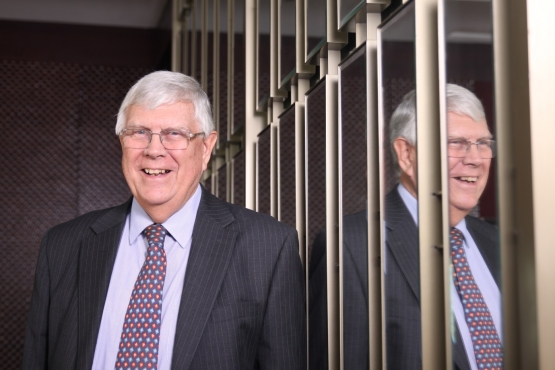echo
 Sept
2017
Sept
2017
East Indonesia remains an under performer because of a lack of good infrast ructure. A new direction is re quired, perhaps one that encourages local government to take a more self-help approach, and one that relies less on central bureaucratic direction and support. This approach would fit the decentralization spirit set out in 1998. Many view the bureaucracy as too slow a view that is not entirely fair, as many in government quietly get on with their tasks, delivering their infrastructure. However, there is not enough of them.
On the bright side is the awarding of new toll road setions, albeit the private sector involvement is limited. The proposed Availability Payment Scheme, for new marginally feasible toll road developments, will get an airing for the upcoming construction of the Serang-Pandeglang Toll Road, which will help bring the tourist development of Tanjung Lesung and benefit the tourism sector as a whole.
.JAKARTA-SURABAYA RAIL
It is encouraging that Japan is seriously mulling the long-discussed construction of a fast rail link between Jakarta and Surabaya. This 780 km link has been described as the last serious corridor in the world without a decent rail connection. The latest consideration would hypothetically cut the journey to five hours from today's 12. The discussion now is whet her this should be done with a G2G, B2B or hybrid solution, and whether to use "older" technology with an operating speed of 160 kph.
It is interesting to recap that in the late 1990s a British proposal with feasibility study, with which I was involved, was tabled with the Transport Ministry. In this proposal the design speed was 200 kph, with a journey time of four hours and 40 mins. Costs at that time were about $3.5 billion but, unfortunately, killed by the 1998 financial crisis.
However, while a travel time of l2 hours is unacceptable, a rail journey of under five hours becomes a realistic option along the north Java corridor with naturally shorter times for intermediate stops, such as for Cirebon or Semarang. It then competes with flights between Jakarta and Surabaya, after factoring waiting times at the airport.
In conclusion, the infrastructure imperative is as strong, if not stronger, than ever. All who care about its delivery are hoping to see more and a wider range of projects implemented with a greater involvement of the private sector.
Development Frustration
 Sept
2017
Sept
2017
By: Scott Younger
Jakarta Post
OVER THE PAST FEW months there have been many articles referring to infrastructure, mostly concerned with it s slow rate of development. A common theme is one of frustration, especially from private sector advocates, who feel outlawed by government interest, despite frequent statements welcoming their investment and participation. The maritime strategy has lost direction, the electricity sector is trying to impose tariffs on renewable projects which do not provide a return on risk, and are out of step with world norms, water projects are delayed, and so on. Meanwhile, much of the archipelago lacks promised attention to basic utilities, compounded by vested interests over outmoded methods of handling fuel supply.East Indonesia remains an under performer because of a lack of good infrast ructure. A new direction is re quired, perhaps one that encourages local government to take a more self-help approach, and one that relies less on central bureaucratic direction and support. This approach would fit the decentralization spirit set out in 1998. Many view the bureaucracy as too slow a view that is not entirely fair, as many in government quietly get on with their tasks, delivering their infrastructure. However, there is not enough of them.
On the bright side is the awarding of new toll road setions, albeit the private sector involvement is limited. The proposed Availability Payment Scheme, for new marginally feasible toll road developments, will get an airing for the upcoming construction of the Serang-Pandeglang Toll Road, which will help bring the tourist development of Tanjung Lesung and benefit the tourism sector as a whole.
.JAKARTA-SURABAYA RAIL
It is encouraging that Japan is seriously mulling the long-discussed construction of a fast rail link between Jakarta and Surabaya. This 780 km link has been described as the last serious corridor in the world without a decent rail connection. The latest consideration would hypothetically cut the journey to five hours from today's 12. The discussion now is whet her this should be done with a G2G, B2B or hybrid solution, and whether to use "older" technology with an operating speed of 160 kph.
It is interesting to recap that in the late 1990s a British proposal with feasibility study, with which I was involved, was tabled with the Transport Ministry. In this proposal the design speed was 200 kph, with a journey time of four hours and 40 mins. Costs at that time were about $3.5 billion but, unfortunately, killed by the 1998 financial crisis.
However, while a travel time of l2 hours is unacceptable, a rail journey of under five hours becomes a realistic option along the north Java corridor with naturally shorter times for intermediate stops, such as for Cirebon or Semarang. It then competes with flights between Jakarta and Surabaya, after factoring waiting times at the airport.
In conclusion, the infrastructure imperative is as strong, if not stronger, than ever. All who care about its delivery are hoping to see more and a wider range of projects implemented with a greater involvement of the private sector.
More Articles
- Nudging Forward on Transportation and Water Infrastructure
- Jakarta Infrastructure the Future
- Railways of the Future 2012
- Renewables and Sustainable Development
- The Future of Infrastructure and MP3EI 2012
- A Better Year for Infrastructure
- Challenges to the Delivery of the Six Corridor Development Plan
